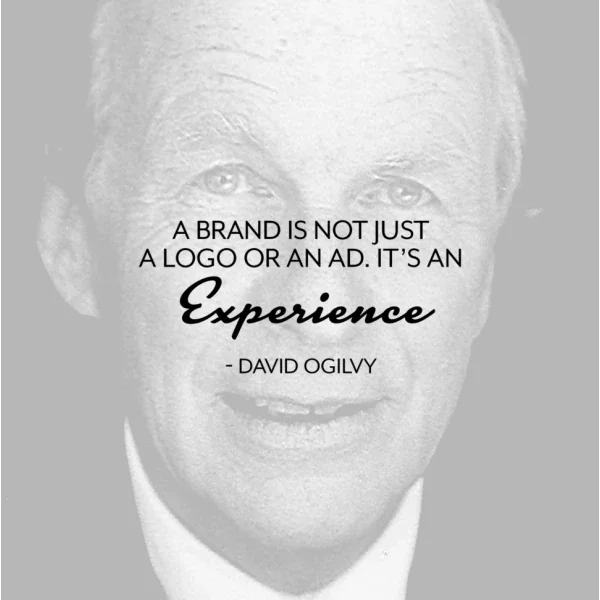
The Role of Copywriting in Brand Building
Enterpreneurs should not Ignore the role copywriting takes in a successful brand building process
March 1, 2022
What is Branding in Business?
Branding is the experience and heart-to-heart connection your product creates when clients consume it.
A product is an object with a container, the product itself, a label and a logo. On the other hand, branding is a perception, the built-on worth your product gives customers.
Products are in the public eye while branding experiences are private.
If I sell you a can of soda, you can see, touch and drink the beverage. But what your customers feel while drinking that product is subjective and they only know the pleasure the product brings to them.
Some may feel the product is refreshing while others may consider it invigorating.
Although branding is a subjective experience, you as owner of the product has to control the audience's perception of your product.
So, you give your product a personality that will appeal to certain groups, not everybody.
The branding experience is applicable to products as well as companies. Companies' personalities should create a deep connection with their audiences to build up long-term relationships that are mutually beneficial.
To be successful in branding, customers' expectations have to become a reality when they use your product or in contact with your business.
Experts' Definitions of Branding
Brand is not a logo or an ad. It's an experience. David Ogilvy

Image Source: flickr.com/photos/mjahangeer/37619559316
A brand is a voice and a product is a souvenir. Lisa Gansky
A brand is the set of expectations, memories, stories and relationships that, taken together, account for a consumer’s decision to choose one product or service over another.
Seth Godin
Products are made in a factory but brands are created in the mind. Walter Landor

Brand is just a perception, and perception will match reality over time. Elon Musk
Your brand is a story unfolding across all customer touch points. Jonah Sachs
The Key Elements of Branding
- Brand purpose establishes the reason why your company exists and what you can do for society beyond your business activity.Brand purpose is the reason why your company exits and the principles you follow.
- Brand mission explains what problems your company solve and how you plan to do your best.
- Brand vision determines the goals to be reached in the future through your company growth.
- Brand values make clear what internal principles guide your business' behavior.
- Brands position is influenced by your knowledge of competition, audience and your unique way of presenting your products.
- Brand identity consists of color palette, fonts, image style and logo to create an emotional connection with customers.
- Brand Language is the way your company speaks to the audience and it takes into account all your communication with customers.
The combination of all these elements allow you to create a consistent presence in your store and website.

Copywriting in Brand Language
Copywriting helps you communicate clearly a group of special benefits that set your product apart from similar ones. This clear messaging helps your business stand out among competing companies that sell similar products.
Marketing communication nurtures the liaison between customers and companies. Through educating and entertaining the audience, communication informs, builds images, reinforces and create psychological satisfaction to those who consume your content. That pleasure brings customers back again. On another level, communication sustains and reinforces transactions.
Online Transaction Communication
- Prospects read an ad and click
- Reach a landing page. Information reinforces the reason why they have to get that product now.
- Click again to pay the product. Instructions to follow turn up.
- Thank you page pops up after the transaction is complete.
As you can see, clear communication has an important role to create desirability, trust and authority to finally trigger customers' action.

"Advertising is salesman in print" was the definition Kennedy expressed in 1904 to Lasker who was looking for a clear definition.
All communication with prospects, customers, employees and others should be carefully thought in advance to get the most of each opportunity.
Copywriters collaboration become invaluable to write texts that engage, nurture and convert prospects.
Elements of Brand Language
-
Brand's name has to be meticulously thought as it will sow a seed in your customers mind, every time they come across with your business. Today, brand names are carefully chosen to boost audience awareness and create an engaged and faithful audience of prospects. .
-
Brand's tagline is a catchy phrase that communicates your unique proposition succinctly and creates a positive impression of your brand. To write a successful tagline, take into consideration how your company provides a valuable and unique offer that's distinct and superior than what the competition provides.
-
Brand's tone of voice is part of your business personality and have to be sustained across all communication.It helps consumers associate certain ideas with your company. Your choice of words and combination creates a particular way of influencing your audience together with your visual design.
Your tone of voice should include:
- Accurate target audience description and their type of language
- Your company's role in relation to your audience ( lecturer, peer, advisor, entertainer)
- Your most important values
- Your company's mission
- Definition of your brand voice
- Preferred vocabulary
- Strict or flexible grammar rules
- Style guide describing your company's standards fro creating, editing and designing communication pieces
-
Brand key messages are created to influence the way the audience perceive your company. Having them in mind every time you communicate with your audience makes it easy to be consistent in your brand communication. This includes your values and the benefits your customers get. A message architecture template can make much easier the creation of consistent communication across departments.This written record may include what the company desires to communicate to their audience and be used as a reference tool.
-
Brand storytelling is a story the brand creates in which the hero is the customer. The company is just a guide that helps customers overcome their problems and transform their lives. Customers want to know why they have to care about your company's services. Customers want to know how big is the transformation your products offer to their lives. The brand story has to create a deep emotional connection with customers they can relate to and so, be willing to be part of that story.
-
Brand's website is the digital place where customers visit you online. Here, you need to communicate with your client in a succinct and effective way to capture their attention and retain prospects on your website. Your customer has to realize immediately what you offer and what's in it for them. You have only 6 seconds to catch website visitors' attention or lose them for ever. Websites should have an intuitive navigation structure so prospects can stay longer and enjoy their experience.
-
Brand's email campaigns are groups of emails you send to your email list and land directly in the inbox of each individual person. This way you get their full attention for a moment, creating an intimate one to one interaction. Email campaigns generally promote certain products and the goal is conversion. You can also contact your mailing list to inform about new products, to nurture them with valuable information or send out a regular newsletter.
-
Brand social media communication is an essential task today as most customers expect every business to have a social media presence. Choose the platforms where your ideal customers are and take part in conversations, answer questions and post highly relevant information to your audience.This way you create brand awareness,engage with your target audience and create a group of devoted followers. To be successful you have to get a social media plan that takes into account your brand's personality and your goals.
-
Brand brochure and catalog are selling tools so, the way they communicate with readers are extremely important. You only have a few seconds of their attention and must grab them there or lose them for ever. Catalogs are educational or entertaining marketing media material that should be clear and easy to read with attractive images. They should include product descriptions,dimensions, color, availability so that they trigger the buying decision.
Conclusion
Most people associate branding with a logo or just company's presence but a company's brand is much more than that. The brand's appearance is visual; the connection the brand builds with its target audience through invisible bridges creates strong ties in relation to the target audience's values, beliefs and lifestyle. Branding in business is important because is the experience and heart-to-heart connection your products create when clients enjoy them and expectations turn into reality.
To be successful in branding, customers' expectations have to become a reality when they use your product or are in contact with your business.
Visual design works in combination with well-crafted messages that create and nurture a long term relationship with customers. Clear communication informs and persuades prospects that your company is the best option to solve their current problems and transform their lives.
So don't be mislead. The role of copywriting and brand language is essential to succeed in brand building.
Add a comment